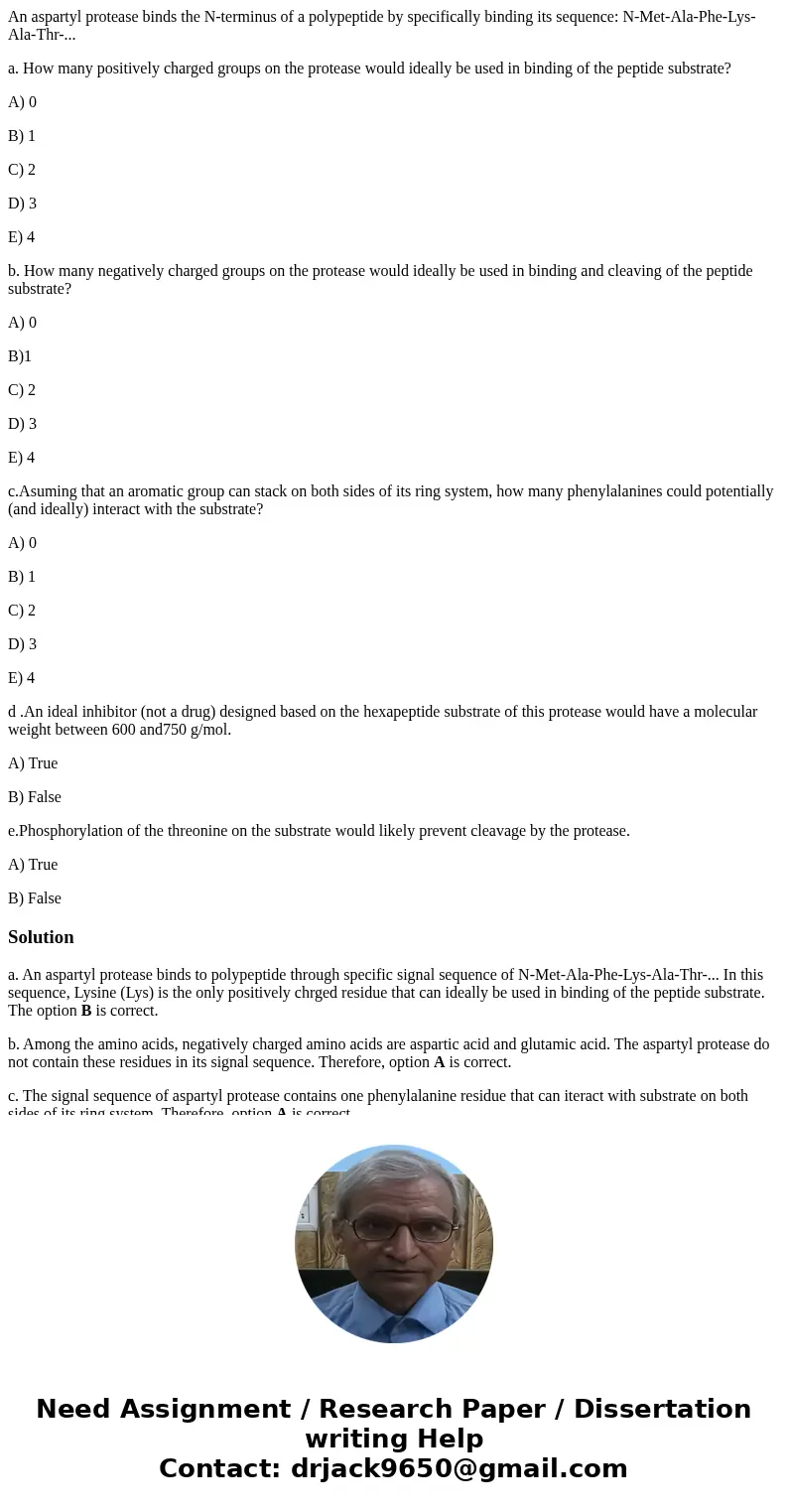An aspartyl protease binds the Nterminus of a polypeptide by
An aspartyl protease binds the N-terminus of a polypeptide by specifically binding its sequence: N-Met-Ala-Phe-Lys-Ala-Thr-...
a. How many positively charged groups on the protease would ideally be used in binding of the peptide substrate?
A) 0
B) 1
C) 2
D) 3
E) 4
b. How many negatively charged groups on the protease would ideally be used in binding and cleaving of the peptide substrate?
A) 0
B)1
C) 2
D) 3
E) 4
c.Asuming that an aromatic group can stack on both sides of its ring system, how many phenylalanines could potentially (and ideally) interact with the substrate?
A) 0
B) 1
C) 2
D) 3
E) 4
d .An ideal inhibitor (not a drug) designed based on the hexapeptide substrate of this protease would have a molecular weight between 600 and750 g/mol.
A) True
B) False
e.Phosphorylation of the threonine on the substrate would likely prevent cleavage by the protease.
A) True
B) False
Solution
a. An aspartyl protease binds to polypeptide through specific signal sequence of N-Met-Ala-Phe-Lys-Ala-Thr-... In this sequence, Lysine (Lys) is the only positively chrged residue that can ideally be used in binding of the peptide substrate. The option B is correct.
b. Among the amino acids, negatively charged amino acids are aspartic acid and glutamic acid. The aspartyl protease do not contain these residues in its signal sequence. Therefore, option A is correct.
c. The signal sequence of aspartyl protease contains one phenylalanine residue that can iteract with substrate on both sides of its ring system. Therefore, option A is correct.
d. The given statement is false. This is because the aspartyl protease molecular weight must be known to design an ideal inhibitor that can effectively inhibit the enzyme. Option B is correct.
e. Phosphorylation of threonine on substrate at C - terminal may prevent the cleavage by protease. Therefore, it is true. Option A is correct.

 Homework Sourse
Homework Sourse